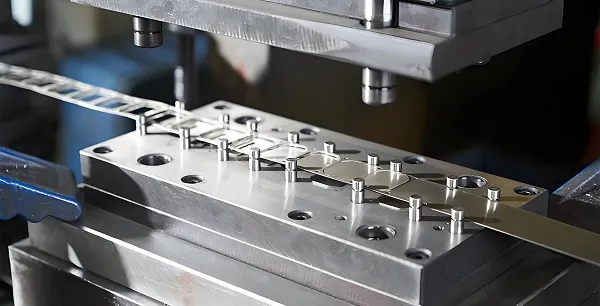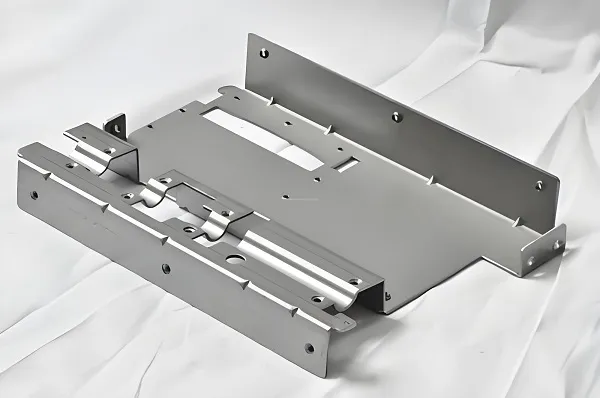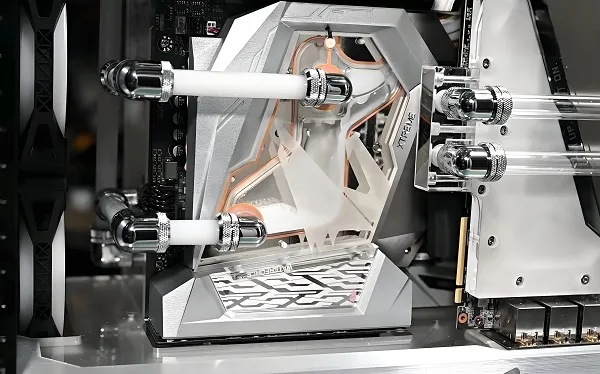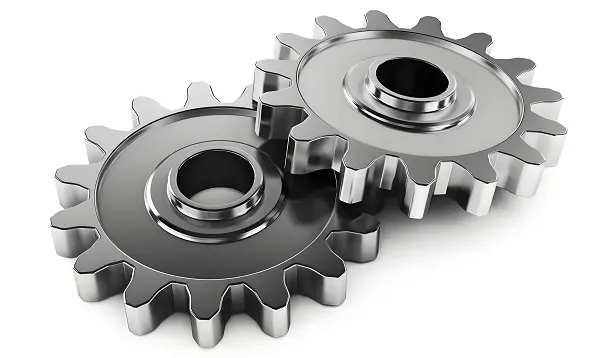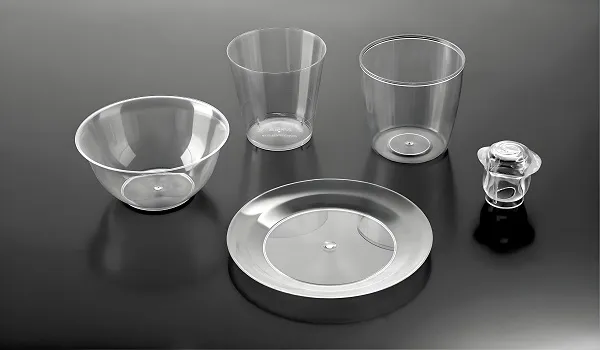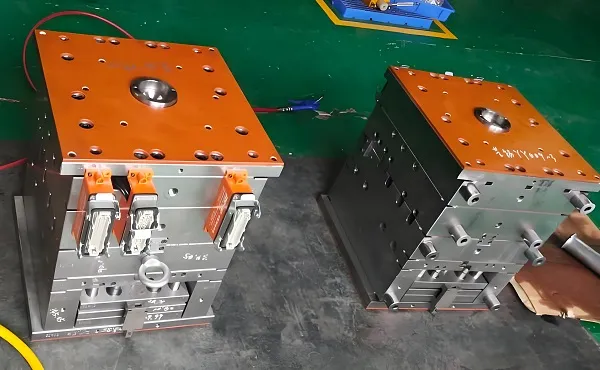
1. Why Custom CNC Machined Mechanical Parts
2. CNC Machined Mechanical Parts Processing Technologies
- 3-Axis CNC Milling: Uses three axes (X, Y, Z) to cut flat or simple 3D parts, ideal for brackets, plates, and basic components with linear features. Offers cost-effective production for moderately complex designs.
- 5-Axis CNC Milling: Adds two rotational axes to 3-axis capabilities, enabling machining of complex, curved geometries (impellers, turbine blades) in a single setup. Reduces setup time and improves accuracy for multi-sided parts.
- CNC Turning: Rotates material while cutting tools shape it into cylindrical parts (shafts, bushings, bolts). Equipped with live tooling, it can add features like slots or threads without secondary operations.
- Wire EDM (Electrical Discharge Machining): Uses electrical discharges to cut hardened materials with extreme precision, suitable for intricate shapes (dies, molds, precision gears) that resist conventional machining.
- Swiss CNC Turning: Specialized for small, long parts (screws, pins) with tight tolerances, feeding material through a guide bushing to minimize deflection. Ideal for micro-components in medical or aerospace devices.
3. CNC Machined Mechanical Parts Processing Flow
- Design & Engineering: Collaborate with clients to define part specifications (dimensions, tolerances, surface finish) and functional requirements (load capacity, environmental resistance). Use CAD/CAM software to create 3D models and generate toolpaths.
- Material Selection: Choose materials based on application needs—metals (aluminum, steel, titanium) for strength; plastics (PEEK, nylon) for lightweight or corrosive environments; or composites for specialized properties.
- Programming: Convert CAD models into machine-readable code (G-code) that directs tool movements, spindle speeds, and feed rates. Simulate toolpaths to detect collisions and optimize cutting strategies.
- Setup & Machining: Secure material blanks in fixtures or chucks, then initiate CNC machining. The process automatically follows programmed toolpaths, with real-time monitoring to ensure accuracy. Complex parts may require multiple setups or machine transfers.
- Post-Processing: Remove burrs, deburr edges, and perform secondary operations (polishing, heat treatment, plating) to enhance surface finish and mechanical properties.
- Quality Inspection: Verify dimensions using precision tools (CMMs, micrometers, optical comparators), check surface finish with profilometers, and test mechanical properties (hardness, tensile strength) for critical applications.
- Finishing & Delivery: Apply coatings (anodizing, powder coating) for corrosion resistance or aesthetics, then package parts for delivery with certification documentation (material certificates, inspection reports).
4. CNC Machined Mechanical Parts Materials
- Metals:
-
- Aluminum Alloys (6061, 7075): Lightweight, corrosion-resistant, and easy to machine, ideal for aerospace components, automotive parts, and consumer electronics. 7075 offers higher strength for load-bearing applications.
-
- Steel (304 Stainless, 4140 Alloy): 304 stainless provides excellent corrosion resistance for food processing or marine parts; 4140 alloy steel offers high tensile strength for industrial machinery and tooling.
-
- Titanium (Grade 5): Combines high strength with low weight and biocompatibility, used in aerospace, medical implants, and high-performance racing components.
-
- Brass & Copper: Excellent conductivity and machinability, suitable for electrical connectors, valves, and fluid handling parts.
- Plastics:
-
- PEEK (Polyether Ether Ketone): Heat-resistant, chemical-resistant, and strong, ideal for medical devices, aerospace, and high-temperature industrial applications.
-
- Nylon (PA6, PA66): Wear-resistant and self-lubricating, used for gears, bushings, and structural parts in low-friction environments.
-
- Acetal (POM): Dimensional stability and low friction make it suitable for precision components like bearings, rollers, and valve stems.
- Composites:
-
- Carbon Fiber-Reinforced Polymers (CFRP): High strength-to-weight ratio, used in aerospace and racing components requiring rigidity and lightness.
5. CNC Machined Mechanical Parts Applications
- Aerospace & Defense: Engine components, aircraft structural parts, missile guidance systems, and drone frames—machined from titanium or aluminum for lightweight strength and precision.
- Automotive & Racing: Custom gears, turbocharger parts, suspension components, and racing engine parts, often made from alloy steel or aluminum for performance and durability.
- Medical Devices: Surgical instruments, implantable components (knee/hip joints), and diagnostic equipment parts, machined from titanium or medical-grade plastics for biocompatibility.
- Industrial Machinery: Hydraulic valve bodies, pump components, conveyor system parts, and robotic arm joints, using steel or cast iron for high load capacity.
- Energy Sector: Oil and gas valve parts, wind turbine components, and power generation equipment, machined from corrosion-resistant materials (stainless steel, Inconel).
- Electronics Manufacturing: Precision fixtures, semiconductor processing parts, and automation equipment components, requiring tight tolerances (±0.001mm) for alignment.
6. CNC Machined Mechanical Parts Performance Additions
- Surface Treatments: Anodizing (aluminum) for corrosion resistance and wear; galvanizing (steel) for rust protection; or electroless nickel plating for a hard, uniform finish.
- Heat Treatment: Processes like annealing (reducing stress), quenching, and tempering (increasing hardness) enhance mechanical properties—critical for high-stress parts like gears or shafts.
- Precision Grinding: Achieves ultra-smooth surfaces (Ra 0.02μm) and tight dimensional tolerances (±0.0005mm) for parts requiring minimal friction (bearings, seals).
- Coating Applications: PTFE (Teflon) coatings reduce friction; ceramic coatings improve heat resistance; or DLC (Diamond-Like Carbon) coatings enhance wear resistance.
- Assembly Features: Integrating threaded inserts, keyways, or snap-fit designs simplifies installation, reducing the need for additional fasteners and improving assembly efficiency.
7. CNC Machined Mechanical Parts Common Questions
What tolerances can CNC machining achieve?
3-axis milling typically achieves ±0.01mm; 5-axis milling and Swiss turning can reach ±0.001mm for critical dimensions. Tolerances depend on material (harder materials require tighter controls) and part size (larger parts may have slightly looser tolerances).
Which materials are best for high-wear applications?
High-carbon steel (1045), alloy steel (4140), and titanium (Grade 5) offer excellent wear resistance. For extreme conditions, surface treatments like carburizing or nitride coating further enhance durability.
How long does custom CNC machining take?
Prototypes or small batches (1–10 parts) take 1–3 days; medium runs (10–100 parts) take 3–7 days; large volumes (1000+ parts) take 2–4 weeks, depending on complexity and material availability.
Is CNC machining cost-effective for small production runs?
Yes—CNC machining avoids expensive mold costs, making it ideal for small batches. While per-unit costs are higher than mass production methods (casting, forging), it eliminates upfront tooling expenses and allows for design flexibility.
Can CNC machined parts meet industry certifications?
Absolutely—we produce parts compliant with AS9100 (aerospace), ISO 13485 (medical), ISO 9001 (general manufacturing), and other standards. Documentation includes material certificates, inspection reports, and process validation records.

